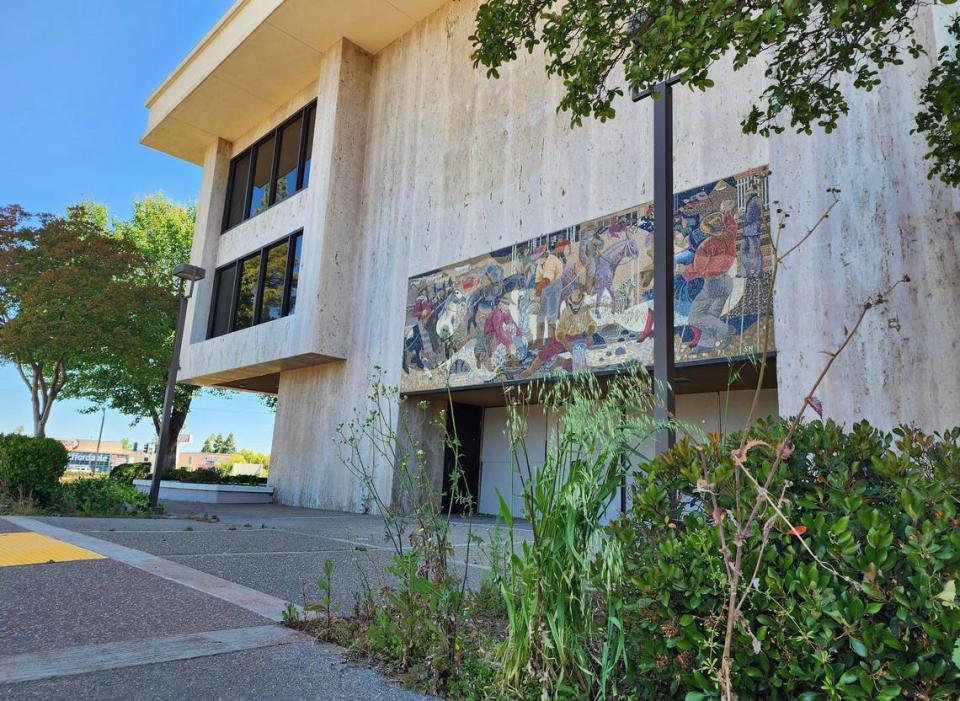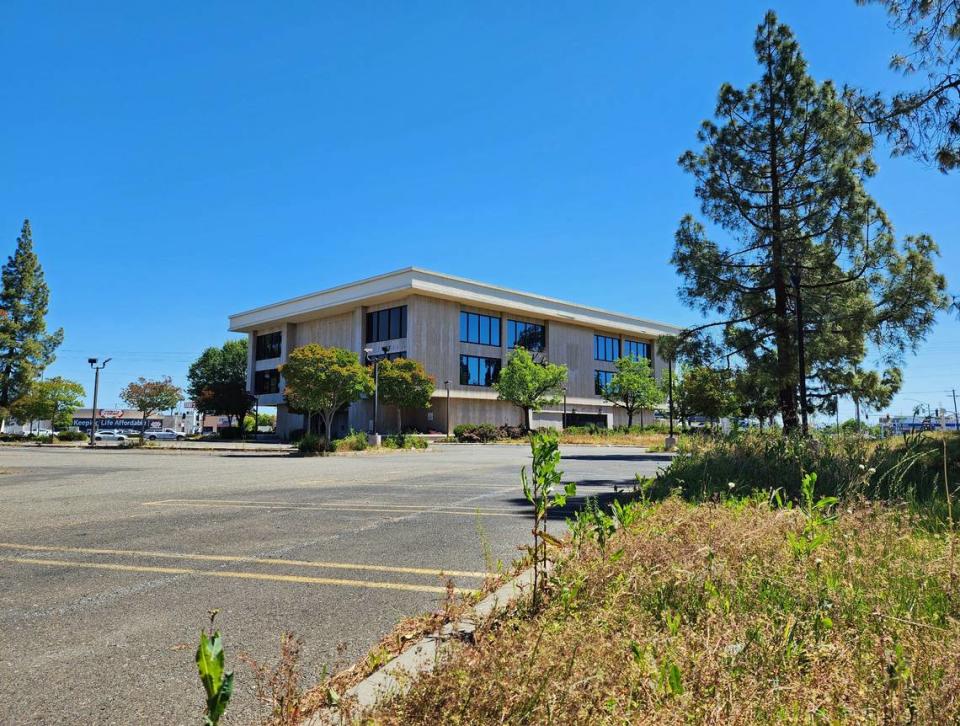Should this historic building in Arden Arcade be demolished for a Shake Shack?
Reality Check is a Sacramento Bee series holding officials and organizations accountable and shining a light on their decisions. Have a tip? Email realitycheck@sacbee.com.
The future is uncertain for a former Home Savings and Loan building in Arden Arcade. Its owners approached the city about razing it to build a Shake Shack, while others argue it’s an historic site that deserves preservation due to its architectural roots and art on display.
The debate surrounds 1950 Arden Way, which sits between Arden Fair Mall, Cal Expo and a popular movie theater. It’s on the west side of one of the area’s busy intersections where four roads converge. It’s a large unused building in an area flush with stores, restaurants and traffic.
The three-story former bank completed in 1978 has been vacant for at least five years while its owners have struggled to find commercial tenants.
The Sacramento City Council is expected to determine on May 28 whether the building should be listed on the Sacramento Register of Historic and Cultural Resources, which wouldn’t prevent it from getting demolished, but would make the process more complicated.
Before the City Council are questions to answer: Should a late-20th century business building surrounded by commercial real estate and busy roads be considered a historic site? What’s the purpose of keeping the building? And how could it be repurposed?
What do design experts say?
Sacramento is considered to have a distinctive architectural history, and preserving the building and others like it could be important to that history, said Brett Snyder, an associate professor of design at UC Davis.
“In terms of preserving these buildings, Sacramento has just an amazing array of buildings in many styles (including) Victorian, mid-century modern,” Snyder said. “These are what give Sacramento its incredible character. So I think there’s immense value in preserving these kinds of buildings.”
The preservation staff wrote in a report: “this building embodies an incredible amount of energy, as well as historic and artistic value that the City should recognize through its historic designation process.”
The report noted it could have alternative uses while citing similar buildings such as the recently closed J St. restaurant the Bank and a commercial building on Freeport Boulevard in Land Park that’s occupied by a civil engineering firm.
The building’s owners commissioned local firm Dudek to conduct an evaluation of its historical significance. Dudek concluded the building doesn’t deserve historic status “under any criteria” even though the building includes murals done by renowned artist Susan Bright Lautmann Hertel.

“The murals alone are insufficient to render the subject building and the property as a whole eligible for listing in any registration program,” Dudek’s report said, while noting the building and its artwork are less than 50 years old, which could hurt the case for preservation.
Hertel, who died in 1993, collaborated with visual artist Millard Sheets for about 30 years and created public murals found on many of Sheets’ designed Home Savings and Loan buildings. Hertel’s mosaic murals sit above two outdoor entrances and another above a main entryway inside. Simon Salder, the chair of the design department at UC Davis, said he believed the mosaics could be important to preserve.
Also key to the argument to preserve the building is its ”new formalist” architectural style.
The preservation staff’s report said the style is characterized by its “symmetry, smooth wall surfaces typically of travertine or marble, and a close attention to detail.”
“The problem is buildings are most vulnerable at the moment that we stopped noticing them or we think they’re ugly,” Salder said.
What is the new formalist style?
Salder said new formalist style was a result, after World War II, of many architects looking to create “solid and permanent” looking buildings.
“The second World War made things feel less certain,” Salder said. “A lot of architects started to feel modern architecture should feel more monumental.”

The new formalist style was believed to be popular for commercial and civic buildings like embassies from the 1950s to 1970s. Dudek’s report argued the building didn’t include all of the characteristics of the style to be considered historically significant while the preservation staff argued that wasn’t necessary.
“The New Formalist style reflects a time in the United States’ history when the country was focused on depicting stability and power during an uncertain time of inflation, political upheaval, and the transition of the US economy from manufacturing to a service-based economy,” a city council report said. “The Home Savings and Loan Building, with its dominant size, forms and classical influence, conveys this message of a stable banking institution in a landscape dedicated to the purchasing of goods and leisure activity.”
Those on the other side of the argument are hoping to add one of the most popular burger chains in the country to the site.
Shake Shack in the last quarter of 2023 outperformed the rest of the fast food industry that declined by 1.6%, according to Reuters, jumping about 15%. Its stock prices as of February jumped about 33% from the previous 12 months while the chain recently reported $286 million in revenue in 2023, up 20% from 2022.
Sacramento’s first Shake Shack was built in the midtown Ice Blocks in 2020 and was followed by another in Roseville’s Westfield Galleria mall. Another is expected to open in Folsom later this year.
Despite the new formalist architecture of the building and the mosaics it features, Salder believes the owners wanting to demolish the building might have the upper hand.
“I think the Shake Shack is going to win this,” he said. “If it’s been empty five years and development is what it is, and if nobody wants that building, I don’t really see how (it remains).”
How could the building be repurposed?
Sean de Courcy, the preservation director for the city, said the building could be reused productively in a number of ways without tearing it down, noting the owners had a previous deal fall through with a hospital and considered making the building a veterinary facility.
“We’ve also been reached out to by various people looking to put schools in this building, charter schools,” de Courcy said. “It could also serve as potentially a grocery store or market. ... One thing I thought could be a creative re-use is a data center.”
The building is currently surrounded by overgrown weeds and has been broken into multiple times, de Courcy said, which is hurting its curb appeal and drawing complaints from citizens.
“So it’s kind of hard to convince someone to reuse, re-occupy the building if it’s sitting there in a decaying state,” he said.

